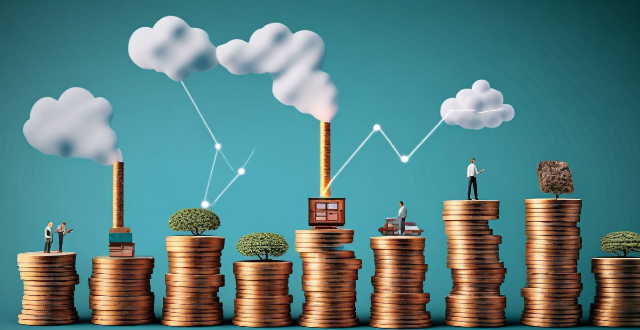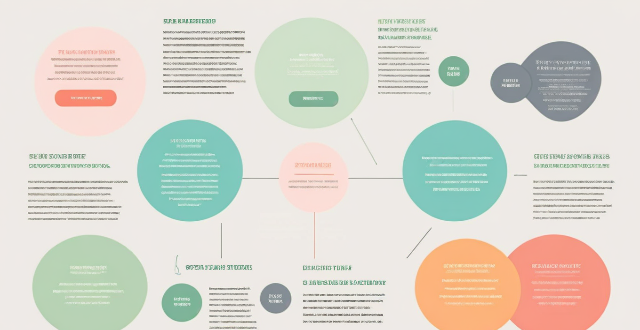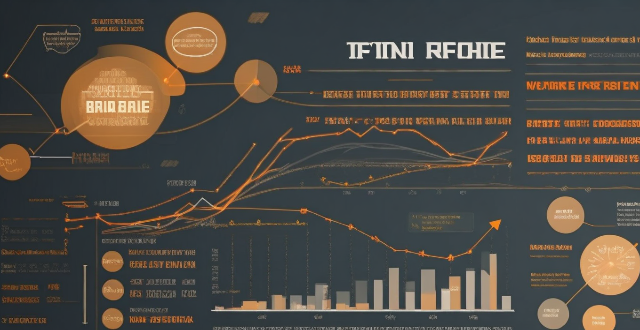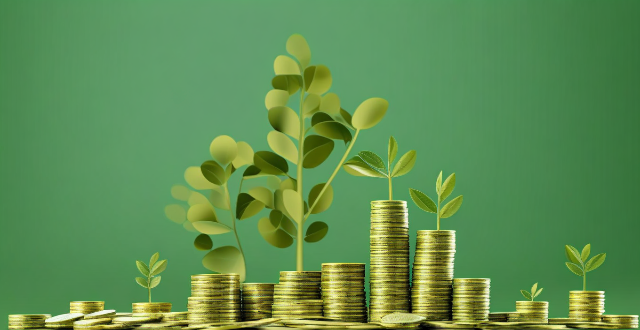Bond Green

How can investors identify credible green bond opportunities ?
Investing in green bonds is becoming increasingly popular as more investors seek to align their portfolios with environmental sustainability goals. However, it is crucial for investors to identify credible green bond opportunities to ensure that their investments truly contribute to positive environmental impacts. Here are some key steps and considerations for identifying credible green bond opportunities: 1. Understand the definition of green bonds. 2. Look for certification and verification. 3. Examine the use of proceeds. 4. Assess the environmental impact. 5. Check transparency and reporting. 6. Consider the credit quality. 7. Review the legal framework. 8. Consult professional advice.

What criteria should be met for a bond to be classified as a green bond ?
Green bonds are fixed-income instruments specifically designed to raise capital for climate and environmental projects. To be classified as a green bond, the issuer must meet certain criteria, including how the funds will be used, which projects are eligible, transparency in reporting, certification and review by third parties, and additional requirements depending on the framework being used. These criteria ensure that the funds raised through issuance of the bond are used for environmentally sustainable purposes. Green bonds play a crucial role in financing sustainable development and promoting a low-carbon economy.

How do bond yields affect my investment returns ?
Bond yields significantly impact investment returns, particularly for bond and bond-related security investors. Yields represent the interest rate paid by bond issuers to holders and are crucial for expected returns. Higher yields generally result in increased interest income but can also cause price volatility. Inflation affects real returns, and lower yields may increase opportunity costs. Strategies like diversification, duration management, active management, and staying informed can help maximize returns amidst changing bond yield environments.

How do interest rates affect bond prices and yields ?
Bond prices and yields are inversely related to interest rates. When interest rates rise, bond prices fall, and vice versa. This is because the yield on a bond is determined by its coupon rate, which is fixed at the time of issuance. Therefore, if interest rates increase after the bond is issued, the yield on the bond will be lower than the current market rate, making it less attractive to investors. Conversely, if interest rates decrease after the bond is issued, the yield on the bond will be higher than the current market rate, making it more attractive to investors. Other factors that affect bond prices and yields include credit risk, inflation expectations, and economic growth. When interest rates rise, bond prices fall, and the yield curve steepens. When interest rates decrease, bond prices rise, and the yield curve flattens. To manage interest rate risk, investors can diversify their portfolio across different types of bonds and maturities, use hedging strategies such as interest rate swaps and futures and options contracts, and engage in active management through market timing and credit analysis.

How do I get started with bond investing ?
Bond investing is a popular way to diversify your portfolio and earn a steady income. Here are some steps to help you get started: 1. Understand the basics of bonds. 2. Determine your investment objectives. 3. Choose the right type of bond for you. 4. Consider the duration of the bond. 5. Research and select brokers or intermediaries. 6. Diversify your portfolio by investing in various types of bonds issued by different entities. 7. Monitor your investments regularly and adjust your portfolio as needed based on changing market conditions or personal circumstances.

How can I diversify my portfolio with bond investments ?
Diversifying your portfolio with bond investments can reduce investment risk and provide a steady stream of income. There are several types of bonds, including government, corporate, municipal, and foreign bonds, each with its own characteristics and risks. Bond mutual funds and ETFs offer automatic diversification across multiple issuers and types of bonds. When investing in bonds, consider factors such as credit quality, interest rate risk, inflation risk, and liquidity. To effectively diversify your portfolio with bonds, allocate a portion of your portfolio to bonds, invest in different types of bonds, consider bond maturities, and rebalance regularly. Consulting with a financial advisor can help determine the best bond strategies for your individual financial goals and risk tolerance.

Are there any risks associated with investing in green bonds that investors should be aware of ?
Investing in green bonds comes with certain risks that investors should be aware of, including credit risk, interest rate risk, inflation risk, liquidity risk, reputational risk, legal and regulatory risk, project risk, climate risk, and ESG (environmental, social, and governance) risk. These risks can impact the returns on investment and the overall success of the investment strategy. It is important to carefully evaluate each green bond investment opportunity and consult with financial advisors before making any investment decisions.

What is the difference between a bond and a stock ?
Bonds and stocks are two different types of financial instruments that companies use to raise capital. While both are used for funding, they have distinct differences in terms of ownership, returns, risks, and other factors. Here are some key differences between bonds and stocks: - Bonds represent debt and provide regular interest payments with a fixed maturity date, while stocks represent equity and offer potential dividends and capital appreciation without a set maturity date. - When you buy a bond, you are essentially lending money to the issuer (usually a company or government). In return, you receive a bond certificate that represents your loan. You do not own any part of the company; you are simply a creditor. - When you buy a stock, you become a part owner of the company. This means you have a claim on the company's assets and earnings, as well as a say in how the company is run through voting at shareholder meetings. - The primary return from owning a bond comes from interest payments made by the issuer. These payments are usually fixed and paid at regular intervals until the bond matures, at which point the principal amount is repaid. - The return on stocks comes from dividends (if the company chooses to pay them) and capital gains (the increase in the stock price over time). Stock prices can be volatile, so the potential for high returns is greater than with bonds, but so is the risk. - Generally considered less risky than stocks because they offer a fixed rate of return and have priority over stockholders in the event of bankruptcy. However, there is still risk involved, especially if the issuer defaults on its payments. - More risky than bonds because their value fluctuates with market conditions and the performance of the underlying company. If the company does poorly, the stock price may fall significantly, and investors could lose part or all of their investment. - Have a defined maturity date when the principal amount must be repaid by the issuer. This provides a clear timeline for investors. - Do not have a maturity date; they exist as long as the company remains in business. Investors can sell their shares at any time in the open market. - Interest income from bonds is typically taxed as ordinary income. - Long-term capital gains from stock sales may be taxed at a lower rate than ordinary income, depending on the tax laws of the jurisdiction.

Are green bonds a profitable investment compared to traditional bonds ?
Green bonds are a type of fixed-income security designed to finance environmentally friendly projects. While their risk and return profile can be similar to traditional bonds, green bonds offer potential diversification benefits, alignment with sustainability goals, and possibly tax benefits. However, their long-term performance relative to traditional bonds depends on various factors such as interest rate changes and market sentiment. Green bonds often come with more rigorous reporting requirements to ensure the proceeds are used for environmentally friendly projects. Whether green bonds are more profitable than traditional bonds cannot be definitively answered without considering individual investment goals and market conditions.

Can green bonds help fight climate change effectively ?
Green bonds, a type of fixed-income instrument, are issued to fund environmentally friendly projects that aim to reduce greenhouse gas emissions and promote sustainable development. They can effectively contribute to the fight against climate change by incentivizing renewable energy projects, supporting energy efficiency and conservation, investing in low-carbon infrastructure, promoting sustainable agriculture and forestry, and advancing research and development. However, challenges such as ensuring transparency and accountability, achieving scale and impact, integrating with broader climate strategies, and engaging diverse investors must be addressed to fully realize their potential. As the market for green bonds grows, they remain an important tool in combating climate change effectively.

What role do green bonds and other financial products play in climate financing ?
Green bonds and other financial products are crucial for climate financing, enabling investors to support environmentally friendly projects. These instruments fund renewable energy, energy efficiency, waste management, biodiversity conservation, and other eco-friendly initiatives, contributing to climate change mitigation and sustainable development. Key features of green bonds include transparency and verification, offering benefits such as attracting capital and pricing advantages but facing challenges like standardization and secondary market liquidity. Other financial products include climate-themed investment funds, CERs, green loans, and credit facilities, which directly finance green projects and stimulate innovation in sustainable practices. By aligning financial returns with environmental benefits, these instruments play a vital role in mobilizing private capital towards climate action, helping to bridge the funding gap for sustainable projects and mitigate climate change.

What role do governments play in promoting the use of green bonds ?
Governments play a crucial role in promoting the use of green bonds by providing incentives for issuance, establishing regulations and disclosure requirements, issuing their own green bonds, and promoting education and awareness campaigns. These actions help accelerate the transition to a more sustainable economy and address pressing environmental challenges facing our planet.

What are some successful examples of green finance initiatives around the world ?
Green finance initiatives are gaining momentum as governments, financial institutions, and investors increasingly recognize the importance of addressing climate change and promoting sustainable development. Here are some successful examples of green finance initiatives around the world: 1. Green Bonds: The Climate Bonds Initiative (CBI) and World Bank Green Bonds are two successful examples of green bonds that have been issued to finance renewable energy projects, forest conservation, and other environmentally friendly initiatives. 2. Green Banks: The Connecticut Green Bank and New York Green Bank are two successful examples of green banks that focus on investing in clean energy and sustainability projects. 3. Green Investment Funds: The Parnassus Endeavor Fund and Calvert Social Investment Fund are two successful examples of green investment funds that invest in companies with strong environmental, social, and governance (ESG) practices. 4. Green Microfinance Institutions: Grameen Shakti and EcoZoom are two successful examples of green microfinance institutions that provide loans and other financial services to small-scale entrepreneurs who are involved in environmentally friendly activities. 5. Public-Private Partnerships for Sustainable Development: The Global Environmental Facility (GEF) and International Finance Corporation (IFC) are two successful examples of public-private partnerships that leverage private sector expertise and resources to achieve sustainable development goals.

How does the issuance of green bonds benefit environmental projects ?
Green bonds are financial instruments designed to fund environmentally friendly projects, offering benefits such as increased funding opportunities, improved project visibility, long-term financing, risk mitigation, market growth and innovation, policy and regulatory support, and community and environmental impact. These bonds not only benefit the specific environmental projects they aim to fund but also contribute to a broader shift towards sustainable finance and environmental stewardship.

How does inflation impact bond investments ?
Inflation significantly impacts bond investments by decreasing purchasing power, increasing interest rate risk, creating opportunity costs, and affecting fixed-income investors. Inflation-indexed bonds can mitigate these effects.

How can individuals invest in clean energy projects ?
Investing in clean energy projects is a way to support sustainable development and fight climate change. Individuals can invest through renewable energy mutual funds, green bonds, direct investment in clean energy companies, community solar projects, and sustainable real estate investments. Examples include iShares Global Clean Energy ETF (ICLN), Toyota Green Bond, and Eco-friendly apartment complexes.

What role do banks play in promoting green finance ?
Banks promote green finance by offering loans for sustainable projects, investing in eco-friendly companies, and introducing green products. They also educate customers on sustainability and collaborate with governments and NGOs to support green initiatives.

How can governments promote green finance initiatives ?
Governments can promote green finance initiatives by establishing legal frameworks, raising public awareness, providing financial support, facilitating market development, and engaging in international cooperation.

How does green finance contribute to sustainable development ?
Green finance plays a pivotal role in driving sustainable development by channeling financial resources towards environmentally friendly projects and initiatives. Here's a detailed look at how it contributes: 1. Promoting Renewable Energy 2. Supporting Green Infrastructure 3. Advancing Clean Technology 4. Influencing Corporate Behavior 5. Regulating Financial Markets 6. Educating Investors and the Public

What is green finance ?
Green finance is the use of financial instruments and strategies to support environmentally friendly projects. It includes sustainable investing, green bonds, green banks, carbon credits, impact investing, climate-related disclosures, ESG criteria, green indexes, green funds, green insurance, green tax incentives, green microfinance, green real estate, green technology, and green partnerships. The goal of green finance is to promote economic growth while minimizing negative impacts on the environment.

How can we promote the use of green technology ?
Green technology is essential for mitigating climate change and ensuring a sustainable future. To promote its use, strategies include education campaigns, integrating sustainability into school curricula, offering financial incentives and tax breaks, implementing regulations, funding research and development, encouraging corporate responsibility, supporting community projects, showcasing successes, participating in global agreements, promoting eco-labeling, and encouraging green marketing. These efforts can drive innovation, create jobs, and foster economic development sustainably.

How can green bonds help finance environmentally friendly projects ?
Green bonds are a type of financial instrument designed to raise capital for environmentally friendly projects. They offer dedicated funding sources, attract sustainability-focused investors, enhance corporate reputation, and potentially lower borrowing costs. Examples of projects funded by green bonds include renewable energy development, energy efficiency upgrades, sustainable water management, clean transportation, and waste management. As awareness of climate change grows, the use of green bonds is expected to expand, driving progress towards a more sustainable future.

What is the future outlook for green jobs ?
The future outlook for green jobs is promising, asThe future outlook for green jobs is promising, as eco-friendly practices continues to The key factors driving this growth include government policies, consumer demand, technological advancements, corporate social responsibility, and international collaboration. Examples of green jobs include renewable energy technicians, sustainability managers, green building designers, waste management professionals, conservation scientists, and environmental lawyers.

What is the role of credit rating agencies in bond investing ?
Credit rating agencies are pivotal in bond investing, offering independent assessments of issuers' creditworthiness. They conduct thorough analyses and assign ratings reflecting the likelihood of default, aiding investors in risk evaluation and portfolio diversification. These ratings contribute to market transparency, efficient price discovery, and enhanced liquidity. They also play a role in regulatory compliance for institutional investors and capital markets regulation. However, concerns about conflicts of interest and rating accuracy during crises highlight the need for improved methodologies and increased accountability.

What role does government play in promoting green technology ?
The government plays a crucial role in promoting green technology. This is because the government has the power to create policies and regulations that can encourage the adoption of sustainable practices and technologies. Here are some ways in which the government can promote green technology: 1. Funding and Incentives 2. Regulations and Standards 3. Public Awareness Campaigns 4. Collaboration with Industry

How does green technology help the environment ?
Green technology, or clean technology, includes various techniques and products designed to reduce environmental harm. Its benefits include reducing greenhouse gas emissions, conserving natural resources, protecting ecosystems, reducing waste, and promoting sustainable practices. These technologies help minimize pollution, save energy, preserve water, maintain biodiversity, and encourage recycling and responsible waste management. As green technology advances, its positive impact on the environment is expected to increase.

What are the economic benefits associated with urban green spaces ?
Urban green spaces provide economic benefits to cities, including increased property values, reduced air pollution, and enhanced tourism. These spaces improve the living environment, leading to higher home and rental prices, increased tax revenue, and healthcare cost savings. Additionally, they attract tourists, boosting the local economy through job creation and multiplier effects. Investing in urban green spaces is beneficial for both the environment and city prosperity.

How can an understanding of environmental psychology aid in the design of green spaces that enhance mental health ?
The text discusses the importance of environmental psychology in designing green spaces that enhance mental health. It highlights key principles such as biophilia, perceptions of safety, social interaction, cognitive restoration, and sensory experiences. The article suggests incorporating natural elements, defined areas, communal facilities, quiet zones, and multisensory features to create green spaces that promote relaxation, community building, cognitive engagement, and overall well-being.

What role do urban green spaces play in climate adaptation strategies ?
Urban green spaces play a crucial role in climate adaptation strategies by providing cooling effects, carbon sequestration, flood control, and habitat preservation. To effectively incorporate these spaces into climate adaptation efforts, city planners should conduct assessments, develop comprehensive plans, collaborate with local communities, monitor and evaluate projects, and educate residents about the benefits of green spaces.

What are the benefits of green jobs ?
Green jobs, also known as sustainable jobs or eco-friendly employment, refer to positions that contribute positively to the environment and help in mitigating climate change. These jobs are often focused on renewable energy, energy efficiency, pollution control, waste management, and environmental conservation. The benefits of green jobs are multifaceted and can be categorized into economic, environmental, and social dimensions. In summary, green jobs offer a triple win by stimulating economic growth, protecting the environment, and enhancing social well-being. As societies continue to prioritize sustainability, the importance of these jobs will only increase, making them a cornerstone of future employment landscapes.